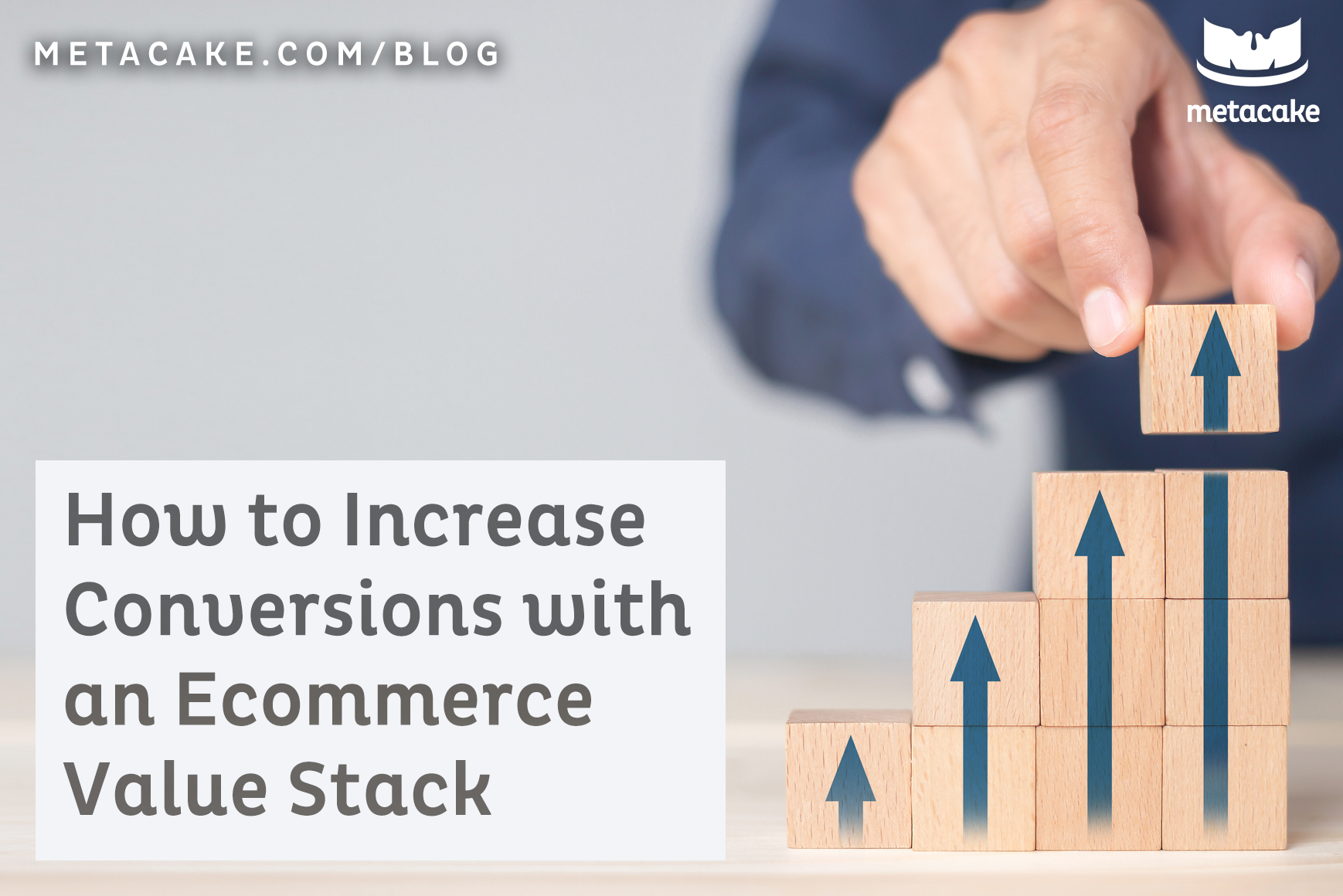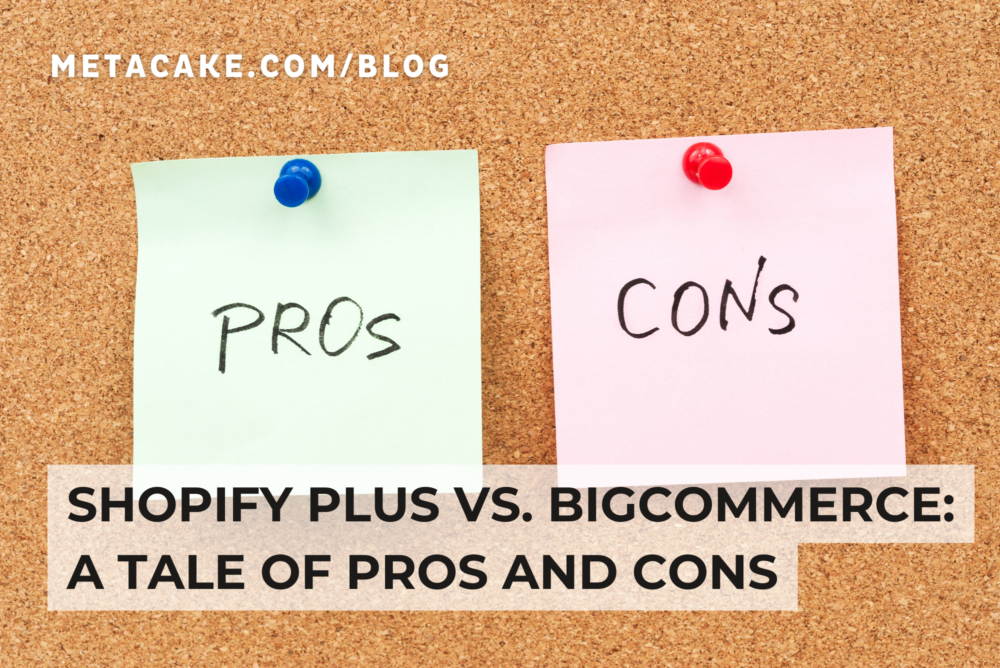
How to Increase Conversions with an Ecommerce Value Stack
Is your ecommerce store’s conversion rate in the low single digits? Are you frustrated with paid advertising that’s not converting or emails that aren’t making any sales? You might be like other business owners who are quick to blame low sales on the marketing “just not working”. But before you jump to turning off the ads or completely changing your email strategy, keep reading. It’s likely you actually have a problem with your offer.
If you have a well-built ecommerce site and a solid marketing strategy but they aren’t converting as well as you’d like, then there can only be two problems:
1. You’re not getting the right people to your store. If that’s the case, it’s time to dial in (or reassess) your ecommerce customer avatars and then be sure your marketing efforts are reaching and speaking to those avatars effectively.
2. Your offer isn’t appealing enough.
A key component to successful selling online is creating an irresistible offer– something your customer can’t say no to. And an important part of that offer is how you communicate the value of your offer through something we call a value stack.
In this post, we’re going to discuss the seven elements of an effective ecommerce value stack, which will greatly improve your offer (and hopefully your sales as well).
Why is Communicating Value So Important?
With so much to browse and buy online, it’s not enough to just detail the features and benefits of your product and hope that’s enough to convince a customer to press “Add to Cart”.
Value is THE most important thing to communicate. It’s the only reason anyone actually buys something. (Think about it. Even if it’s expensive, the customer will rationalize that the value of what they’re getting justifies the price.)
Value is the difference between what something COSTS the person vs. what they receive in return (a.k.a. the results they get). Every product is associated with a goal or a result they’re trying to achieve, no matter how simple. Whether it’s learning a new skill, fixing their dry skin, having the right necklace that looks just like an influencer’s, being able to mow their lawn faster — every product is purchased with a result in mind. And that product’s promised result is what gives it value and justifies the price.
The Power of a Value Stack
With that in mind, a value stack is simply compounding all the value a customer will receive by buying a product. It’s stacking the result the product offers, its benefits, and the value of seeing those benefits in one’s life, until the value is so obviously more than the hard cost. At that point, the customer can’t say no.
7 Elements of a Great Ecommerce Value Stack
Ready to dive into the 7 elements of an ideal value stack? Let’s go.
1. Branding
Your brand is the most important component of the value stack. It’s why so many people are willing to pay more for a product made by Apple over other brands, or why people would much rather pay more for a name brand fashion item than get a deal on a knockoff. However, the power of your brand is subtle and must be built up over time. Tactically speaking, your brand shows up in the environment you create for the customer. More than just your logo, branding is communicated through your website design, your copywriting across the site, the way you present your products, your company’s story, what customer service is available, and more.
2. Features and Benefits
Most ecommerce brands know they should list features and benefits on their product pages. That’s what the description section is for. Features and benefits describe how your product solves a need.
One important note, the need the customer is experiencing always has a time or monetary cost required for solving it. It’s not always necessary to display that to the customer, but at least define it on your own because that will impact the way you’re able to communicate value.
3. Bonuses that Incentivize Action
Time-based selling is effective and important for getting a customer to say “yes” now rather than “I’ll think about it.” So a big part of the value stack is explaining that this product offering is not always available this same way.
For example, maybe you’re offering free shipping only if they purchase today. Or maybe you’ll throw in free content if they order today (for example, a free PDF guide to a topic related to the product). Or maybe purchasing today will give them VIP access to a big sale or product drop coming next month. These are all things many brands already do but forget to present it as added value for the customer.
4. Limited Time Offers
Ideally, you won’t always have a price reduction on your products (otherwise you run the risk of conditioning customers to only buy when things are on sale). But when you do, be sure to present the savings clearly using a strikethrough on the original price. You might also opt to add a feature that shows their savings, such as “Save $10!” or (25% Off!).
However you present your limited time offer, be creative and make it feel special. And to make it more impactful, communicate their savings and the value they are getting and contrast that with the problem they currently have without the product and the cost of not taking action during this special offer.
5. Cost
A big part of communicating value is understanding and presenting cost— the cost of your product compared to the cost of not taking action today, as well as what it would cost to solve the problem in other ways.
Along with that, present the results they’ll get from purchasing and using your product, which is the upside of the cost. How much will they save in the future by purchasing today? For example, “Consumers spend hundreds of dollars per year trying different skincare solutions. Try this regimen today for $79 and never waste money trying products that don’t deliver results again.”
6. Risk Reduction
Reducing risk is an important part of the value stack. Since risk has a cost, if perceived risk can be eliminated, you can reimagine that as cost savings for your customer.
There are several things you can do to eliminate or lower any perceived risk of trying your product. For example:
- Product reviews (this is huge!)
- Build trust by communicating the expertise that has gone into making this product
- A great return policy or warranties
- Your brand’s reputation
7. Education
Information about your product can exponentially increase its value. Why? Any “value” is just perceived value. For instance, what is the value of a firestarter when you’re stranded in the wilderness vs. when you’re at home lighting a candle. It’s very different, right?
Think about what information you can supply your customer with in order to increase the value of your product, just by the way they see it in their life and use it.
Another practical example would be an expensive vitamin or supplement. If you have never heard of that supplement and have no understanding of its function or why it’s helpful, it would seem absurd to spend $50 per month on a bottle of capsules with a fancy name. But what if you were educated about how it’s made and how it interacts with your internal systems on a biological level? What if you learned about the vitamin deficiencies and mineral imbalances you have, how that affects how you feel day-to-day, and how this supplement can help? All of a sudden, it has value. $50 per month seems like a no brainer!
How Should You Present Your Value Stack?
Once you’ve defined how you’ll present each of these seven elements of your value stack to the customer, where do you put them?
These can be shown in various ways throughout your website and in your marketing as well. You can choose to organize them in a list on the product detail page. Or, you can simply place the different elements throughout the site experience more subtly.
If you do place all of these details on the product detail page, be sure to prioritize the most important details in the top description. Then come up with a method that organizes more info down below. For more info on how to set up this important page just right, check out The Perfect Product Detail Page.
And for more information on building the ideal ecommerce website that builds trust, communicates value, and sells, check out our full guide The Perfect Ecommerce Website.
Keep Value at the Center of Your Sale
Communicating value in a compelling way is central to converting site visitors into customers. Features and benefits are a factor in that, but unless you translate that to the value it adds to their life and how much it helps them save in the long run, all those features and benefits will be easy for the customer to walk away from.
And remember, value is not universal — it’s actually relative. It’s perceived. Use that to your advantage as you create your value stack for your products and your brand.
If you’re a 6 to 9 figure brand needing to create more profitable ecommerce growth in your business, we’d love to help. Click below to get started.



